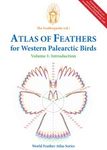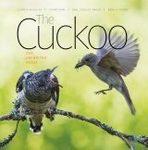About this book
Physiological Adaptations for Breeding in Birds is the most current and comprehensive account of research on avian reproduction. It develops two unique themes: the consideration of female avian reproductive physiology and ecology, and an emphasis on individual variation in life-history traits. Tony Williams investigates the physiological, metabolic, energetic, and hormonal mechanisms that underpin individual variation in the key female-specific reproductive traits and the trade-offs between these traits that determine variation in fitness.
The core of the book deals with the avian reproductive cycle, from seasonal gonadal development, through egg laying and incubation, to chick rearing. Reproduction is considered in the context of the annual cycle and through an individual's entire life history. The book focuses on timing of breeding, clutch size, egg size and egg quality, and parental care. It also provides a primer on female reproductive physiology and considers trade-offs and carryover effects between reproduction and other life-history stages.
In each chapter, Williams describes individual variation in the trait of interest and the evolutionary context for trait variation. He argues that there is only a rudimentary, and in some cases nonexistent, understanding of the physiological mechanisms that underpin individual variation in the major reproductive life-history traits, and that research efforts should refocus on these key unresolved problems by incorporating detailed physiological studies into existing long-term population studies, generating a new synthesis of physiology, ecology, and evolutionary biology.
Contents
Illustrations ix
Abbreviations xv
Acknowledgments xvii
Chapter 1. Introduction 1
1.1. Structure of the chapters 1
1.2. A primer on reproduction in female birds 3
1.3. Individual variation 4
1.4. What is not in this book? 5
1.5. Avian reproduction in a changing world 6
Chapter 2. The Hormonal and Physiological Control of Egg Production 8
2.1. Overview of the female reproductive system 9
2.1.1. Pre-vitellogenic follicle development 11
2.1.2. Rapid follicle growth (RFG) or rapid yolk development (RYD) 14
2.1.3. Vitellogenesis and lipoprotein metabolism 18
2.1.4. Mechanisms of receptor-mediated yolk uptake 23
2.2. Oviduct structure and function 25
2.3. Regulation of the timing of egg-laying (oviposition) 28
2.3.1. Follicle atresia and laying skips 32
2.4. Hormonal control of ovarian and oviduct function 33
2.4.1. The ovary 34
2.4.2. The oviduct 39
2.5. Hypothalamic and pituitary regulation of gonadal function 40
2.6. Hormonal integration of environmental information 43
2.6.1. Photoperiodic control of gonadal function 44
2.6.2. Supplemental, non-photoperiodic cues and ovarian function 48
2.7. Future research questions 50
Chapter 3. Timing of Breeding 52
3.1. Early-season events are critical in determining timing of breeding 54
3.2. Fitness consequences of timing decisions 56
3.3. Selection on timing of breeding 60
3.4. Constraint, individual optimization, and the search for mechanism 64
3.5. Sex-specific response mechanisms for timing of breeding 66
3.6. Physiological mechanisms associated with photoperiod (day length) as a proximate factor 71
3.6.1. Individual variation in photoperiodic response 72
3.6.2. Where would sex-specific photoperiodic response mechanisms reside? 76
3.7. Physiological mechanisms associated with temperature as a proximate factor 78
3.7.1. Temperature as a long-term "information" cue 78
3.7.2. Correlates of temperature as information cues 82
3.7.3. Possible "direct" effects of temperature on timing 83
3.7.4. Where would temperature response mechanisms reside? 87
3.8. Physiological mechanisms associated with food availability as a "proximate" factor 88
3.8.1. Argument 1: Food availability is a constraint because supplemental food advances the timing of laying 89
3.8.2. Argument 2: Food availability must be a constraint because egg production is energetically expensive 90
3.8.3. Argument 3: Food availability is a constraint because pre-breeding "body condition" determines laying date 91
3.8.4. Where would food (resource) response mechanisms reside? 92
3.9. Conclusion 97
3.10. Future research questions 99
Chapter 4. Egg Size and Egg Quality 100
4.1. Individual variation in egg size 100
4.2. Fitness consequences of variation in egg size 106
4.2.1. Egg-size-clutch- size trade-offs and fecundity costs of large egg size 113
4.3. Selection on egg size 117
4.4. Variation in egg composition or egg quality 118
4.4.1. Egg macronutrient composition 118
4.4.2. Yolk hormones 121
4.4.3. Egg immunoglobulins and antimicrobial proteins 127
4.4.4. Egg antioxidants 130
4.5. Physiological mechanisms underlying individual variation in egg size and egg quality 133
4.5.1. Mechanisms regulating egg size and egg-size- dependent egg quality 133
4.5.2. Mechanisms underlying egg-size-independent variation in egg quality 143
4.6. Variation in the primary sex ratio and sex-specific follicle development 146
4.7. Extreme flexibility in reproductive investment: The house finch 150
4.8. Conclusions 151
4.9. Future research questions 153
Chapter 5. Clutch Size 155
5.1. Individual variation in clutch size and clutch number 155
5.2. Why does clutch size vary among individuals? 160
5.2.1. Chick-rearing ability and individual optimization of clutch size 161
5.2.2. Nest predation and clutch size 165
5.2.3. Embryo viability, incubation capacity, and clutch size 167
5.2.4. Constraints on egg production 170
5.3. Selection on clutch size 172
5.4. Physiological mechanisms of clutch-size determination 175
5.4.1. Determinate versus indeterminate laying 176
5.4.2. A general mechanistic model for control of clutch size in birds 177
5.4.3. Potential mechanisms for individual and date-independent variation in clutch size 185
5.4.5. Proximate constraints on clutch size: food availability and nutrient reserves 187
5.5. Conclusion 194
5.6. Future research questions 196
Chapter 6. Parental Care: Incubation and Chick-Rearing 198
6.1. Comparative aspects of variation in parental care 198
6.2. Individual variation in parental care 201
6.2.1. Incubation 201
6.2.2. Chick-rearing 204
6.3. Fitness consequences of individual variation in parental care 207
6.3.1. Incubation effort, constancy, and duration 208
6.3.2. Short-term effects of incubation effort 209
6.3.3. Long-term effects of incubation effort 210
6.3.4. Chick-rearing, provisioning effort, and nestling productivity 212
6.3.5. Short-term effects of variation in chick-rearing effort 213
6.3.6. Long-term effects of variation in chick-rearing effort 214
6.4. Physiological mechanisms underlying individual variation in parental care 217
6.4.1. Energetic costs of incubation 220
6.4.2. Energetic demands of chick-rearing 224
6.4.3. Nutritional demands of incubation and chick-rearing 224
6.4.4. Are there resource-allocation trade-offs during parental care? 228
6.5. Hormonal mechanisms underlying individual variation in parental care 231
6.5.1. Prolactin and parental care 232
6.5.2. Prolactin and individual variation in parental care 235
6.5.3. Corticosterone and breeding failure 237
6.5.4. Corticosterone and individual variation in parental care 238
6.6. Conclusions 243
6.7. Future research questions 245
Chapter 7. Trade-Offs and Carry-Over Effects 247
7.1. Carry-over effects between winter, the pre-breeding period, and reproduction 249
7.2. Costs of reproduction 251
7.3. Carry-over effects between reproduction and post-breeding life stages 254
7.3.1. Post-fledging parental care 254
7.3.2. Breeding-molt overlap 255
7.4. Physiological mechanisms underlying trade-offs and carry-over effects 260
7.5. Resources and resource-allocation mechanisms 263
7.6. Mechanisms arising from direct physiological or hormonal "conflict" between overlapping functions 268
7.7. "Integrated" physiological mechanisms and individual quality 273
7.7.1. Stress, allostasis, and reactive scope 274
7.7.2. Oxidative stress 277
7.7.3. Oxygen-transport systems, hematology, and anemia 281
7.8. Conclusion 290
7.9. Future research questions 291
Chapter 8. Conclusions 293
Bibliography 299
Index 361
Customer Reviews
Biography
Tony D. Williams is a professor in the Department of Biological Sciences at Simon Fraser University. He is the author of The Penguins.



































